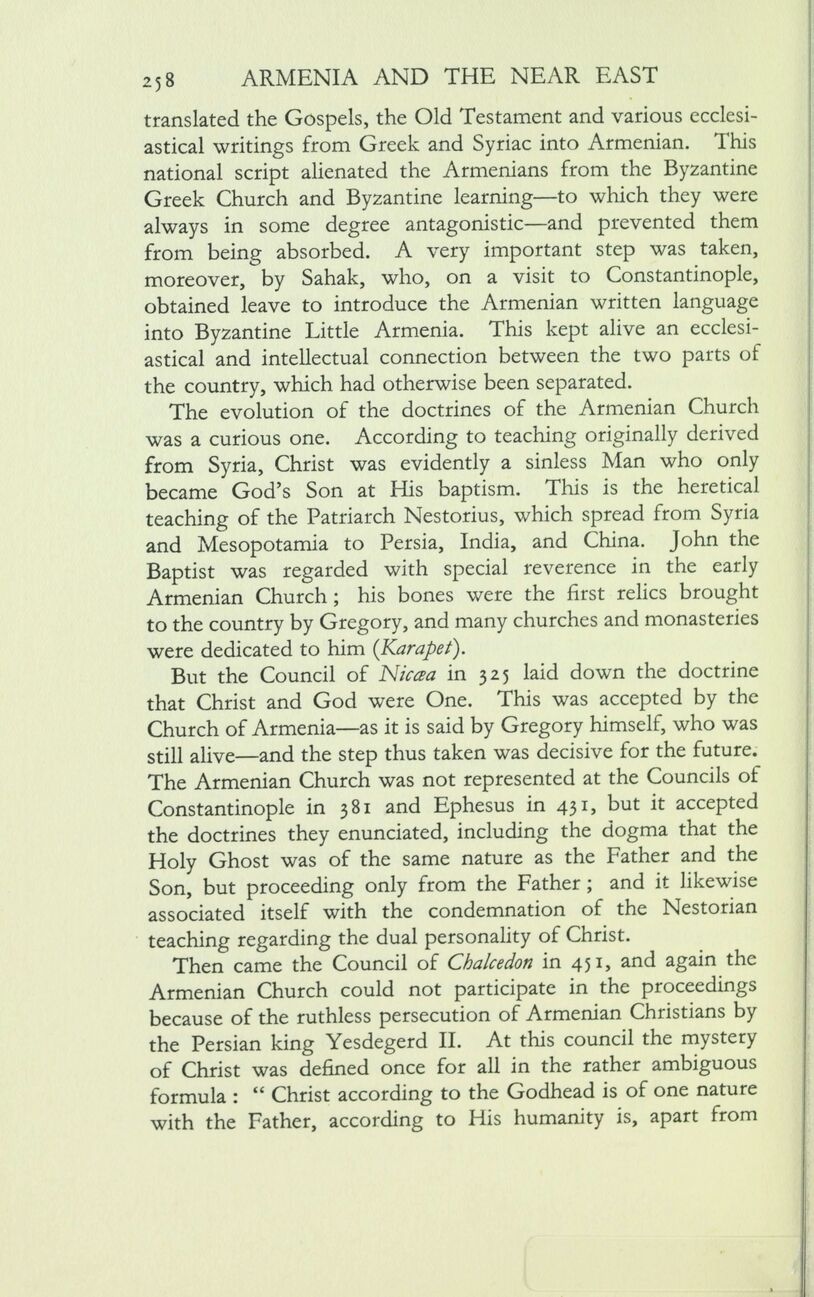
Full resolution (JPEG) - On this page / på denna sida - X. Chapters in the history of Armenia

<< prev. page << föreg. sida << >> nästa sida >> next page >>
Below is the raw OCR text
from the above scanned image.
Do you see an error? Proofread the page now!
Här nedan syns maskintolkade texten från faksimilbilden ovan.
Ser du något fel? Korrekturläs sidan nu!
This page has never been proofread. / Denna sida har aldrig korrekturlästs.
ARMENIA AND THE NEAR EAST
2 5 8
translated the Gospels, the Old Testament and various ecclesi
astical writings from Greek and Syriac into Armenian. This
national script alienated the Armenians from the Byzantine
Greek Church and Byzantine learning—to which they were
always in some degree antagonistic—and prevented them
from being absorbed. A very important step was tåken,
moreover, by Sahak, who, on a visit to Constantinople,
obtained leave to introduce the Armenian written language
into Byzantine Little Armenia. This kept alive an ecclesi
astical and intellectual connection between the two parts of
the country, which had otherwise been separated.
The evolution of the doctrines of the Armenian Church
was a curious one. According to teaching originally derived
from Syria, Christ was evidently a sinless Man who only
became God’s Son at His baptism. This is the heretical
teaching of the Patriarch Nestorius, which spread from Syria
and Mesopotamia to Persia, India, and China. John the
Baptist was regarded with special reverence in the early
Armenian Church ; his bones were the first relics brought
to the country by Gregory, and many churches and monasteries
were dedicated to him (Karapet).
But the Council of Nicaa in 325 laid down the doctrine
that Christ and God were One. This was accepted by the
Church of Armenia—as it is said by Gregory himself, who was
still alive—and the step thus tåken was decisive for the future.
The Armenian Church was not represented at the Councils of
Constantinople in 381 and Ephesus in 431, but it accepted
the doctrines they enunciated, including the dogma that the
Holy Ghost was of the same nature as the Father and the
Son, but proceeding only from the Father ; and it likewise
associated itself with the condemnation of the Nestorian
teaching regarding the dual personality of Christ.
Then came the Council of Chalcedon in 451, and again the
Armenian Church could not participate in the proceedings
because of the ruthless persecution of Armenian Christians by
the Persian king Yesdegerd 11. At this council the mystery
of Christ was defined once for all in the rather ambiguous
formula : " Christ according to the Godhead is of one nature
with the Father, according to His humanity is, apart from
<< prev. page << föreg. sida << >> nästa sida >> next page >>